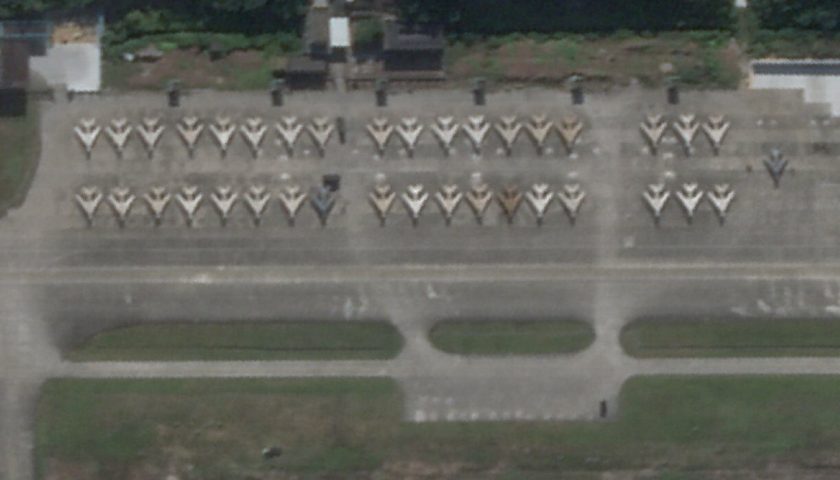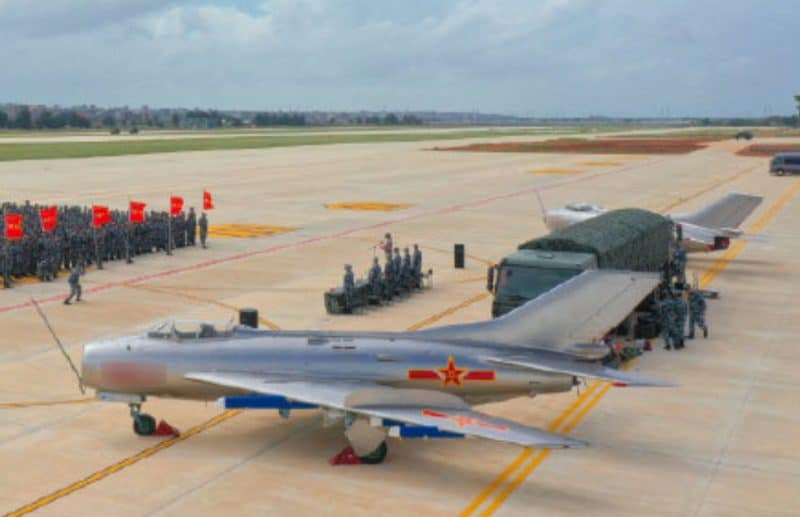The People's Republic of China produced, between the 50s and 80s, nearly 8500 fighter planes derived from Soviet models, such as the Shenyang J-5 derived from the Mig-17 produced in 1800 units, the Shenyang J-6 and the Nanchang Q-5 derived from Mig-19 produced respectively in 4500 and 1300 copies, as well as the Chengdu J-7 derived from Mig-21 and produced in more than 2400 copies. Some of these aircraft, including Q-5s and J-7s, are still in service with the Air Force of the People's Liberation Army, but a majority of these aircraft have been placed in reserve. This mine of devices, many of which are potentially in a condition to resume the air with a maintenance phase, seems destined to be used by the Chinese General Staff in unmanned versions, transforming these agile and fast fighters , admittedly obsolete in many aspects, in combat drones.
For example, the Oriental Theater Command of the People's Liberation Army recently published photos showing the entry into service of two J-6 supersonic twin-jet fighters transformed into drones. In addition, the serial numbers of the devices masked on the photos suggest that this model was already in service with the Chinese air force. At the same time, however, satellite images taken on September 15 of Liancheng Air Base, located opposite Taiwan, showed a very high concentration of J-6, more than 50 devices that analysts believe to be J-6W drone versions, suggesting that this transformation is primarily intended to be used during a possible attack on the independent island by the PLA. Recall that at the same time, several air bases located near the Taiwan Pass, saw their reception and defense capacities significantly increased.

Entered into service in 1962, the J-6 was the first production supersonic fighter of the Air Force of the People's Liberation Army. Only 12,5 m long (excluding the pitot probe) for a wingspan of 9 meters, the aircraft had an empty weight of 5,2 tonnes, and a maximum takeoff weight of 8,8 tonnes. Its two Wopen WP-6A engines, produced locally by Turmansky RD-9, offered a unit thrust of 2,6 tonnes dry and 3,3 tonnes with afterburner, giving the aircraft an excellent power-to-weight ratio for the time, and thus great maneuverability, especially at high subsonic speed thanks to its high-arrow wings. On the other hand, the J-6 only had a maximum speed of Mach 1,45, and its range was limited to 640 km with additional tanks, well below the performance of the Mig-21 and the J-7. who succeeded him. The armament of the device, consisting of 3 30mm cannons fed at 70 rounds each, and the AA-2 Atoll missile, made it a high-performance fighter for its time, but below more modern and more versatile devices such as the F -4 American Phantom, or the Soviet Mig-21. The last J-6s were withdrawn from service at the end of the 90s in the combat units of the PLAAF.

75% of this article remains to read,
Subscribe to access it!
The Classic subscriptions provide access to
articles in their full version, and without advertising,
from 6,90 €.
Newsletter subscription
Register for the Meta-Defense Newsletter to receive the
latest fashion articles daily or weekly

